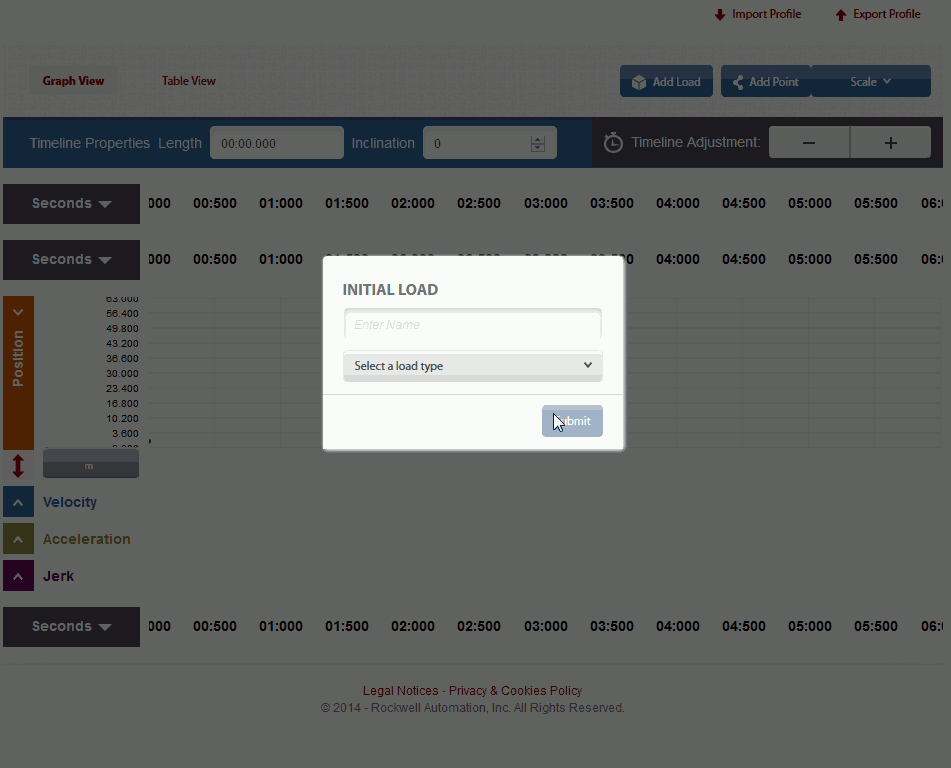Creating a Motion & Load Profile
Note: Be sure to define Motion and Load profiles when defining your system. See below for more details.
Motion and Load profiles define how the application moves and the forces the system must overcome to complete that motion. These forces include the weight or inertia of the object being moved, friction, gravity and other external forces (for example Web Tension or Vacuum Pressure).
The profiles are defined by a set of points. These points define the load, position and velocity of the profile at that point in time as well as the properties of the segment between the two points. There are two types of motion segments: Acceleration and Index.
Acceleration segments create a motion profile that reach the specified position or velocity at a given time. The profile constantly accelerates during the segment resulting in peak velocity at the start or end point. With an acceleration move you can either define the desired position or the desired velocity but not both.
Index Segments create a set of moves that achieve the specified time, position and final velocity. Unlike the acceleration segment, in an index segment all three of these values can be specified independently. There are currently two index types that can be created. A Triangular Index accelerates to peak velocity and then immediately decelerates to the final velocity. A Trapezoidal index accelerates to peak velocity in roughly 1/3rd of the total move time, holds that velocity for 1/3rd of the total move time and then decelerates to final velocity in 1/3rd of the total move time. These times may vary if velocity limits are applied. A Triangular index will have higher peak speed but lower acceleration rates than a Trapezoidal index.
To Create a Profile, simply click on the graph that you would like to add a point. You can then select your segment type and define your segment properties. You can also click on the ‘Add Point’ button and then select the graph you would like to add a point to. To edit a point you can click on the point or the gray segment area. You can also drag points vertically or drag the vertical line horizontally in time.
In addition to Motion Segments, be sure to enter a Load Segment. When you first created the profile you defined the load type and selected an initial value, however you need to add a second point to have the load apply over the length of your profile. With only the initial value defined, the load will not be taken into consideration for the rest of the profile.
If the Axis type is Linear, you can define an inclination by entering a value for the slope in degrees into the box titled ‘Inclination’. This value can be between 0 and 90 degrees.
Brief Demonstration:


